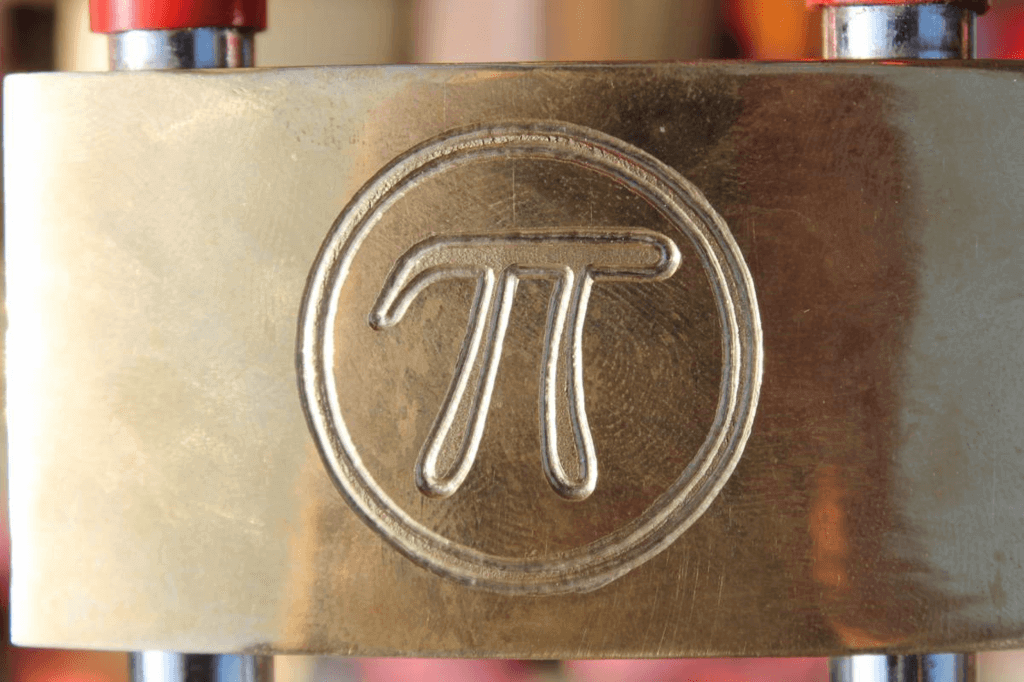Pi Day
Pi Day is observed next on Saturday, March 14th, 2026 (62 days from today).

Did you know March 14 is the anniversary of Pi, honoring the Greek symbol π representing the irrational number 3.14? The ratio of the circumference of a circle to its diameter is Pi. But what else do we know about this Pi day, and about π itself? Pi Day is what Pi is all about, recognizing the importance of Pi to the world. International Day of Pi - the most important constant in mathematics. This date was chosen because the 3 digits 3, 1 and 4 coincide with the first digits of Pi.
History of Pi Day
Pi Day was first celebrated in 1988 in Francisco by physicist Larry Shaw. On March 14, 1988, he and the staff of the Exploratorium got together to honor the constant Pi. Since then, many people have started to consider Pi Day as an annual memorable celebration to encourage math enthusiasts from different walks of life. In 2009, the US government designated March 14 as the International Pi Day.
"Pi" is the name of the 16th letter of the Greek alphabet. It is defined as a constant, which is the ratio between the circumference and diameter of a circle. The name Pi comes from the word peripheria (perijeria) which means circumference of the circle. The symbol for Pi is π. This symbol is derived from the first letter of the word "περίμετρος" (meaning circumference in Greek). The symbol π was first used by William Jones in 1706 in memory of the Greek mathematician Archimedes who was the first to find an approximate value of π. He used a 96-sided polygon and proved that the value of π is 3.1419. The value of Pi has a particularly important role in the field of architecture and construction and is used frequently by astronomers.
Considering its role as a number, π also appeals to math lovers. It is an irrational number, which means it cannot be written as a fraction of two integers, no matter which integer you try to choose. In other words, π is an infinite non-repeating decimal, that is, the decimal part will last forever and will not repeat.
More specifically, π belongs to the very few group that mathematicians call transcendental numbers. It is defined as the number that is not the solution of any algebraic equation.
Page Exploratorium information, Pi was discovered nearly 4,000 years ago by the ancient Babylonians. A Babylonian inscription dating to about 1900-1680 BC shows its value as 3.125.
The book "Rhind Papyrus" circa 1650 BC also opens up insight into the mathematics of ancient Egypt. The Egyptians calculated the area of a circle using a formula that gave π a value of 3.1605, which is more accurate than the previous Babylonian figure.
Archimedes of Syracuse (287-212 BC), one of the greatest mathematicians of ancient Greece, greatly contributed to finding the value of the number π. He used the Pythagorean Theorem to find the area of two regular polygons: the circumcircle polygon and the circumcircle polygon.
Archimedes knew that the area of a circle is a value that lies between the areas of the circumscribed polygon and its inscribed polygon, that is, by calculating the area of these two polygons, we limit the range of values of the area of the circle. Although he did not find a specific number, he calculated that π was a number between 3 1/7 and 3 10/71.
Cho Chongzhi (429-501) is a famous Chinese mathematician and astronomer, he also has a similar approach. According to his calculated, he pointed out that the ratio of the circumference of a circle to its diameter as 355/113. To do that, he performed long calculations involving hundreds of square roots that yielded results to 9 decimal places. However, because his book is lost, how he found π is still not fully resolved.
Mathematicians began using the symbol π, which is a Greek letter, in the 1700s. This notation was introduced in 1706 by William Jones, the Welsh mathematician, then the Swiss mathematician. Leonhard Euler helped popularize it from 1737.
Pi Day is a special occasion for math enthusiasts and bakers to get together.
On the occasion of the first Pi Day in 1988, at the San Francisco Explotarium Science Museum, physicist Larry Shaw and his staff organized a pie eating party.
Since "Pi" and "Pie" have the same pronunciation, on this day, Shaw and his associates enjoyed delicious fruit pies.
There's also an equally interesting explanation for the relationship between Pi and pie: If you write 314 and look in the mirror, its reflection will closely resemble the word "Pie"!
Although the main meaning is to honor Pi, this purpose is only popular in the mathematical world. For the majority of Americans in general, March 14 is known as the second national day of Pie next to the official date of January 23. Even America's most prestigious Baking Council - the American Pie Council - enthusiastically participates in the celebration of Pi day.
Every year, until March 14, Americans are busy preparing delicious and beautiful pies, followed by a series of other exciting activities revolving around Pi and pie: The Pie Throwing Festival, regional and national baking competitions, high school and college math club gatherings – when members gather around a plate of delicious cupcakes. Although it was born not long ago, Pi Day has been successfully celebrated for decades in the US and has become one of the most anticipated holidays by the people.
Observing Pi Day
On Pi Day, you are encouraged to learn more about the math related to the constant Pi. If you live in the US, participate in pie-throwing festivals, regional and national baking competitions. For students, you can join Math clubs at school to discuss problems related to Pi. Share your Pi Day with the hashtag #InternationalPiDay with a positive message to spread Pi Day content to everyone around.
Observed
Pi Day has been observed annually on March 14th.Dates
Thursday, March 14th, 2024
Friday, March 14th, 2025
Saturday, March 14th, 2026
Sunday, March 14th, 2027
Tuesday, March 14th, 2028
Founded by
Larry Shaw in 1988


